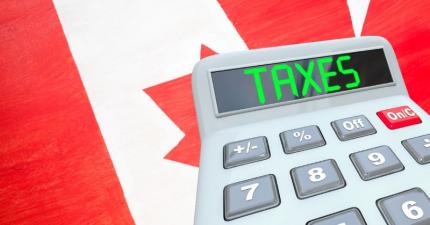Get free consultation
Fill out the form and we will contact you
Canada’s tax system is managed by the Canada Revenue Agency (CRA), with the fiscal year running from January 1 to December 31 each year. Filing taxes helps you comply with the law and provides opportunities to receive tax refunds, tax credits, or benefits such as the GST/HST Credit, Canada Child Benefit, and Ontario Trillium Benefit (if residing in Ontario). This article guides new immigrants on how to file taxes in Canada and highlights tips to maximize tax benefits.
Legal compliance: All Canadian residents (including immigrants from the date they become tax residents) must report all income earned inside and outside Canada by the annual deadline of April 30. For self-employed individuals, the deadline is June 15, but any taxes owed must still be paid by April 30.
Receiving tax refunds: Filing taxes allows you to reclaim any overpaid taxes.
Accessing benefits: Even without income, filing taxes makes you eligible for credits such as the GST/HST Credit or Canada Workers Benefit.
Supporting long-term settlement: Filing taxes on time is an important factor when applying for permanent residency (PR) or Canadian citizenship.
All residents in Canada are required to file taxes in Canada
You need to file taxes if you meet any of the following conditions:
Have taxable income (from employment, business, investments, etc.).
Are required by the CRA to submit a tax return.
Want to receive a tax refund or tax credits/benefits.
Are self-employed, even with low income.
Own foreign assets valued over 100,000 CAD (must be reported).
Non-residents with income from Canada (such as wages or rental income) must also pay taxes at a flat rate (usually 25%, which may be reduced under tax treaties).
Non-residents with income from Canada are also required to pay taxes
Your residency status determines your tax obligations:
Tax resident: Must report all worldwide income (both inside and outside Canada).
Part-year resident: Only report income earned from the date you became a Canadian resident.
Non-resident: Only pay taxes on income from Canadian sources.
To determine your status, the CRA considers factors such as length of stay (usually over 183 days per year), ties to Canada (family, property, employment), and intent to reside long-term. If you need help determining your status, you can consult experts at quoctichthuhai.com.
You need to gather the following documents:
Social Insurance Number (SIN) or Individual Tax Number (ITN): This identification number is required for filing taxes. If you don’t have one, register at Service Canada.
T4 slip: Statement of employment income from your employer (issued before the end of February).
T5 slip: Report of investment income (interest, dividends).
T2202 slip: Tuition certificate for students.
Expense receipts: Eligible travel expenses, home office expenses, or charitable donations.
Foreign asset information: If you own assets valued over 100,000 CAD.
Note: Keep all tax documents for at least six years in case the CRA requests them for verification.
There are three main ways to file your taxes:
Online filing (NETFILE):
Paper filing:
Obtain the T1 General Income Tax and Benefit Return form at the post office or on the CRA website.
Mail it to the CRA office corresponding to your residence (processing takes about 8 weeks).
Professional services: If your finances are complex or you are not confident, consider hiring an accountant or tax service company like H&R Block (fees start from around 50 CAD).
Choose the tax filing method that suits you best
Personal information: Full name, address, SIN/ITN, and province of residence as of December 31.
Income: Report all income from T4, T5, T4A (scholarships), or self-employment.
Deductions and tax credits: Include tuition fees, home office expenses (up to 500 CAD), charitable donations, or moving expenses (if relocating at least 40 km for work).
Foreign taxes: If you paid taxes in another country, you can claim the Foreign Tax Credit to avoid double taxation.
Note: In Quebec, you must also file a separate provincial tax return.
Online submission: Upload the .tax file via CRA’s NETFILE system.
Paper submission: Print, sign, and mail your return to the appropriate CRA address (depending on your province).
Pay taxes owed: Pay any tax balance before April 30 to avoid penalties (payment can be made via bank, online, or mail).
After filing, you will receive a Notice of Assessment (NOA) from CRA, showing taxes owed, refunds, or tax credits.
If there are errors, you can adjust your return through your CRA account or submit an amended return by mail.
GST/HST credit: Refund for low-income individuals.
Ontario Trillium Benefit: For Ontario residents, based on rent and energy costs.
Home office expenses: Up to 500 CAD for home office costs if working remotely.
Tuition (T2202): Students can claim tuition credits and carry them forward if unused.
Moving expenses: Eligible if relocating at least 40 km for work or study.
Deadlines: April 30 for individuals, June 15 for self-employed (but taxes owed must still be paid by April 30). Late filing may incur penalties.
Foreign assets: Must be reported if valued over 100,000 CAD. Failure to declare can result in heavy fines.
Check all information carefully: Errors may delay refunds or trigger CRA audits.
Use free software: Some programs like Wealthsimple Tax offer free filing for simple tax situations.
Faster refunds: NETFILE refunds are processed in 8 days, while paper returns take about 8 weeks.
Improved immigration prospects: Timely tax filing is advantageous when applying for PR or citizenship.
Avoid penalties: Late filing or tax evasion may result in fines or criminal prosecution.
Use professional consulting services at quoctichthuhai.com
Filing taxes in Canada can be complex for new immigrants, especially if you are not familiar with the tax system and related regulations. To ensure legal compliance and maximize your tax benefits, consider using professional consulting services. At https://quoctichthuhai.com/, we offer immigration consulting and tax filing support to help you smoothly integrate into life after settling in Canada.
Fill out the form and we will contact you




